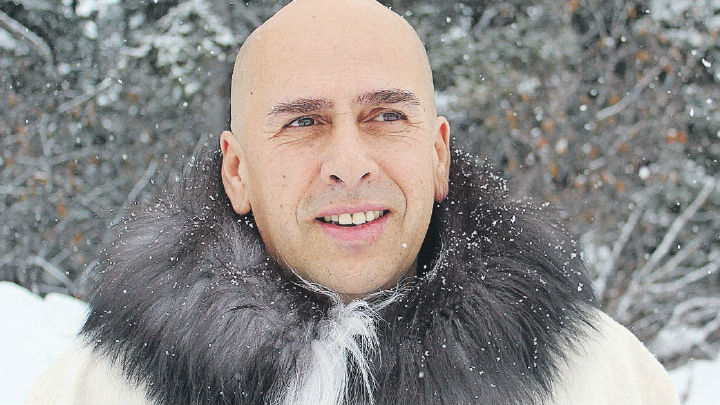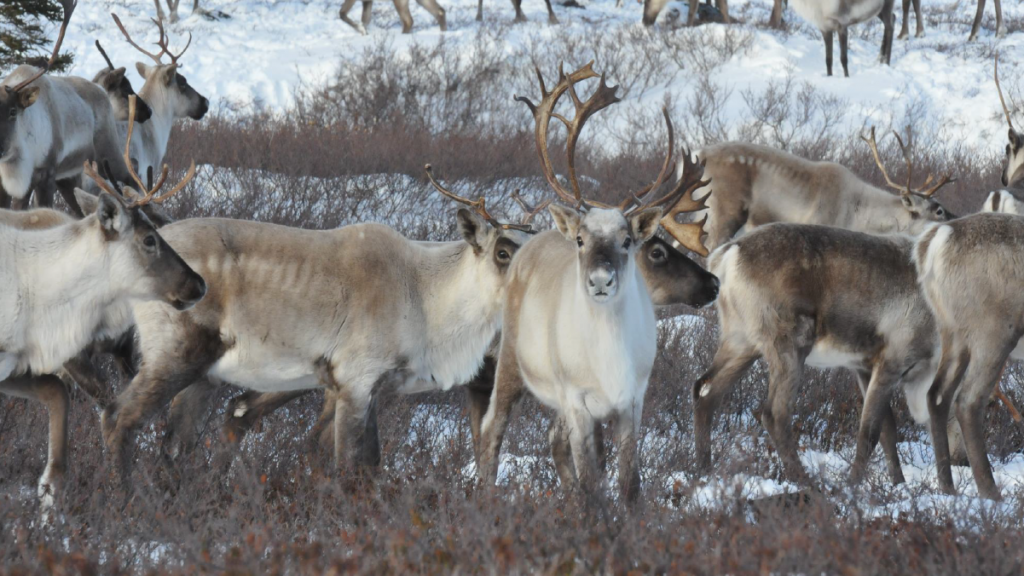George River caribou survey shows slight uptick in eastern Canada but hunting ban remains in place

The most recent survey of the George River caribou herd in the Canadian provinces of Newfoundland and Labrador and Quebec shows a slight uptick in numbers compared to 2018.
The most recent survey was done this summer by wildlife officials in the two provinces and was released on Thursday. The survey put current herd numbers at 8,100 animals, compared to 5,500 animals two years ago.
At its highest levels, the herd numbered approximately 800,000 animals in the 1990s.
“While the results from this year’s census are encouraging, it is much too early to suggest any sustained recovery of the herd is underway,” said Elvis Loveless, Newfoundland and Labrador’s minister of Fisheries, Forestry and Agriculture, in a news release.
“To work towards the shared goal of the long-term sustainability of the herd, we must all remain steadfast in our approach to recovery and ensure impending management decisions continue to recognize the indisputable fact the herd remains in a critically vulnerable and fragile state.”
The fate of George River caribou herd has preoccupied regional and Indigenous governments in the region for years. Herd populations have been declining drastically but nobody understands exactly why.
Indigenous leaders renew calls to respect harvesting ban
There’s been a hunting ban in place since 2013 and most of the Indigenous nations in the area have repeatedly warned hunters of the urgency of refraining from harvesting from the herd despite the material and cultural hardships.

“As Inuit, we have relied on George River caribou for many years for social, cultural, and nutritional purposes to feed and clothe ourselves, our families, and our communities,” said Johannes Lampe, president of Nunatsiavut, the Inuit self-governing region of Newfoundland and Labrador, in a separate news release.
“The sacrifices Labrador Inuit have made to protect the herd are starting to pay off, but we still have a long way to go if we are to ensure the future survival of this vital resource.”
Todd Russell, president of the NunatuKavut Community Council (NCC), the governing body for the approximately 6,000 Inuit of the south and central Labrador region, said further restraint was needed.
“The past decline of the herd has had significant impacts on NunatuKavut Inuit culture and way of life,” Russell said.
“We acknowledge our many hunters who have been observing the community-driven moratorium put in place over the past number of years. Until we are certain that the herds are consistently healthy and well, we are asking that our hunters continue to refrain from taking caribou. We have a responsibility as Inuit, as do other Indigenous and non-Indigenous peoples, to do all we can to help protect the caribou and their habitat.”

Calve numbers encouraging
Among the encouraging signs in the recent survey was the nigh number of calves identified. They were put at 35 per cent of the population.
The survey also indicated that the adult population had increased by 24 per cent compared to the last survey in 2018.
The 2020 overall population increase compared to 2018 is due to the high number of calves born in June as well as an improvement in adult survival, said Blair Adams, the director of Wildlife for Newfoundland and Labrador, in a presentation about the survey.
However, the heard is still in a precarious position, Adams said, and another survey will have to be done to see if the 2020 uptick in numbers is just a blip or part of an ongoing trend.

In the meantime, the government hunting ban remains in place.
“I have hunted that herd for years and have seen it at its peak,” said James W. Holwell, an elder and NCC Councillor for Area 5 in Central/Northern Labrador, in a news release.
“I have really good memories of those days. I fully support a continued moratorium so the caribou can more fully recover and be healthy again. We have a long way to go before we should promote hunting of the herd. Now is not the right time.”
Write to Eilís Quinn at eilis.quinn(at)cbc.ca
Related stories from around the North:
Canada: In Canada’s Northwest Territories, harvesters will get more training to kill wolves, help caribou population, CBC News
Russia: Record-warm Arctic summer fatal to wild reindeer in Russia, say environmentalists, The Independent Barents Observer
Sweden: European elk calves struggling in warmer spring months, Radio Sweden
United States: Conservation groups sue government over Alaska mining road, The Associated Press



